How to grow succulents from seeds?
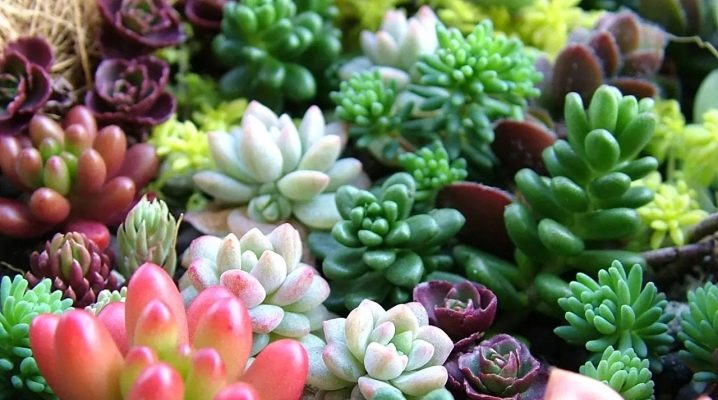
If you are just trying your hand at floriculture, pay attention to succulents. These are one of the most unpretentious plants, and their appearance will decorate almost any interior. It is easier for a beginner to buy a ready-made succulent plant in a flower shop, but it is always more interesting to grow a crop practically from scratch, observing each stage of growth. Germinating seeds is not the easiest way, but you can try.
How do they reproduce?
Breeding succulents carried out in several ways.
- Cuttings. The stalk is traditionally separated from the mother plant and transplanted into a separate flowerpot with specially prepared soil.
- Leaf propagation. If the succulent has leaves, then they can be separated, placed in a container with water. After the roots appear, the plant is planted in a flowerpot.
- Seed reproduction. If a succulent gives birth to seeds, you can plant them in a pot and wait for seedlings. It is not always successful, but it is the least stressful for the plant.
The third method is interesting as a process, it is used everywhere, flower growers are actively sharing their experience in growing succulents from seeds at home.
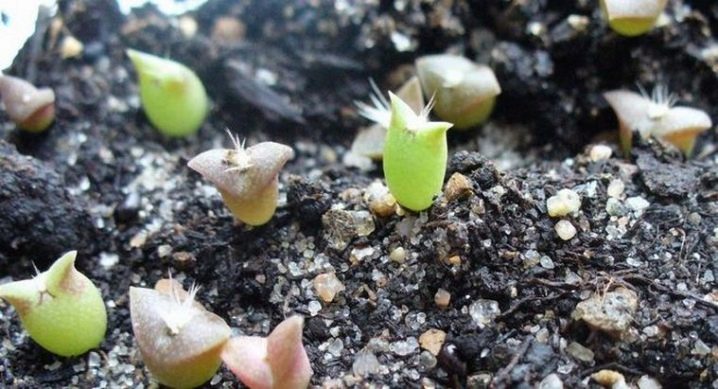
Preparation
The first logical step would be to select seeds. If you have experience in growing flowers, then you know that you can buy an adult plant, extract seeds from it and thus increase the "diaspora" of succulents at home. Therefore, it will be easier for beginners to buy ready-made bags of seeds.
The preparatory stage also requires the selection of a suitable container. No special heat-resistant pots are required. For proper cultivation, the plant needs not very deep (with a side height of about 5 cm) flowerpots. Plastic containers will do. At the bottom of them, there must be holes for the waste of excess moisture. If this is not done, the seeds are more likely to rot. If the manufacturer missed this point, make the holes yourself. Hole diameter - no more than 5 mm.
Important! Succulents are exotic crops, they love warmth, so the container should be covered with a transparent, thin lid on top. This is done so that a hot and humid microclimate is formed inside.
It is convenient to grow succulents in ready-made mini-greenhouses. They are readily available from flower shops, and you can also find them on Asian sites.
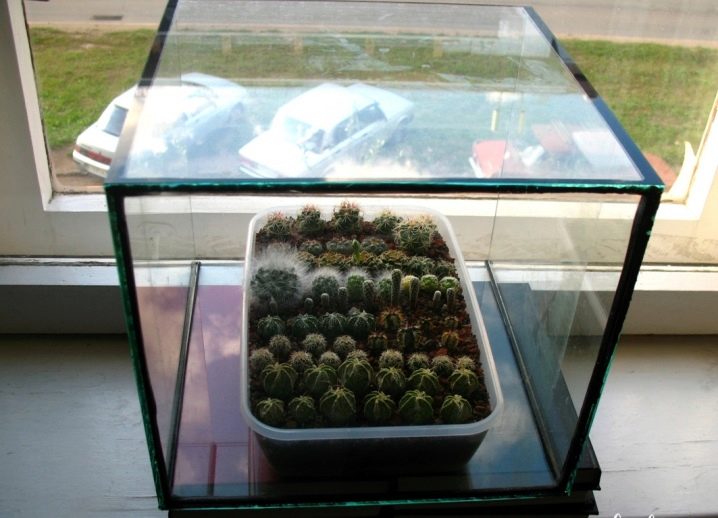
How to choose a soil?
Seeds should be planted in well-prepared soil. In stores, you can find ready-made mixtures, the composition of which is optimal for growing.
However, when preparing the soil, a number of important points should be considered.
- Succulents are able to grow even in difficult conditions, so try to use rough soil for quick adaptation to the crop soil. It can be an earth-sand mixture or a mixture of earth and fine gravel. There is an option for adding crushed coal to the composition.
- For planting plants, you need to take just a ready-made substrate - the land taken, conditionally, at the entrance, of course, will not work. If you buy soil in a store, you can be sure that it is not just packed in a bag, but also disinfected.
- If it is not possible to purchase soil in the store, you can buy a regular peat filler. Add sand and valuable minerals yourself.
Fresh soil, and not already used for growing another crop, is a more reliable option for propagating succulents with seeds. In rare cases, it grows well in not the most suitable soil.Therefore, buying a bag of soil in a special store is already 50% of the fact that the plant will take root and begin to develop intensively.
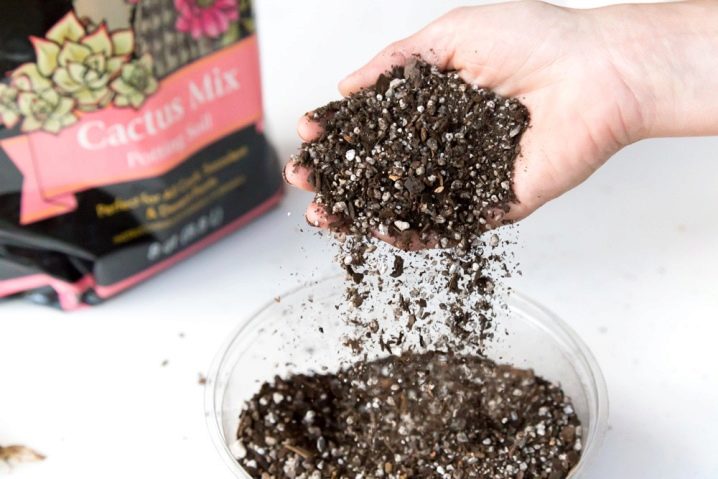
Seed pretreatment
The most troublesome stage is the preparation of succulent seeds directly. All small seeds are similar to each other, so it is not difficult to confuse them. Be careful.
The seeds should be collected first. Spread the available seeds on a white sheet of paper. Those that are not viable must be discarded. This applies to dried and rotten seeds. Then the selected composition is divided into groups. And each group should be allocated a tag that will be attached to the flowerpot after sowing.
You cannot disinfect seeds! This negatively affects their protective layer, which aggravates the further growth of the plant.
The next stage is sowing seeds into the ground. For this, a regular white A4 sheet is also used. Fold it into an envelope with a free edge, from this edge the seed falls perfectly into the prepared moist soil. From above, the seeds are covered with sand or a mixture of sand and earth - a thin protective layer.
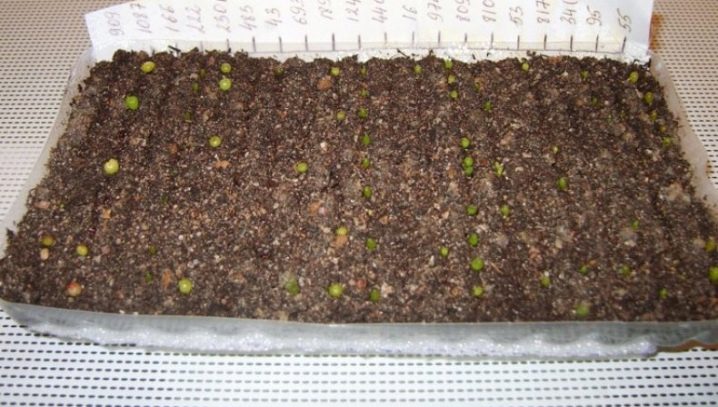
Landing features
Seeds are planted into the prepared soil from the envelope, as if in a thin stream. When you have covered them with a protective earth layer, the soil should be watered. After the first disembarkation, it is easier to do this with a spray bottle, in which there is clean warm water. Do not overuse water - it is only needed to create a greenhouse effect. The home greenhouse can then be closed.
What makes growing in a greenhouse convenient is that it saves more seeds than growing outdoors. It is only necessary to remove the greenhouse cover if the sprouts are clearly visible from the ground. Do not remove the lid until they grow to 1–2 cm.
Seed germination will happen only after a few months of abundant watering. Therefore, be patient - it deserves it: exotic plants look good on the windowsill, and on the shelves, and on the coffee table, etc.
Landing rules:
- in the greenhouse, try to maintain the optimal temperature - 20-30 plus degrees during the day and at least 18 at night;
- protect the seeds from drafts - they can be destructive;
- some external factors, including the sun's rays, are bad for young sprouts, so they should not fall on them;
- it is not worth keeping the greenhouse on the windowsill, but on the table in a room with good lighting it really belongs;
- watering succulents involves regularity in order to avoid drying out the soil;
- stagnation of moisture is also not good for plants.
This method of sowing is not the only one - the "bag method" has also become widespread.

"Pouch method"
Its essence is in the room of a flowerpot with moistened soil and sown seeds in a plastic bag. Why does it help? Seedlings love a humid environment and on a hot day in a dry climate without this humidity can quickly die. In the package, they can be from several days to several weeks.
An important condition for the "pouch method" is sterility.
Better, of course, to use the new package. If you are using an old one, rinse it thoroughly in soapy water. For sterility of the soil, it is calcined for two hours at a temperature of 120 degrees. In the meantime, the soil is "baked", boil the water. After the soil is ready, pour it into a pot, moisten it through a pan with cooled boiled water.
After that, seeds are poured onto the ground, the whole soil is treated with a fungicide (but this is not necessary). The pots are put in bags, and those in a place with good lighting for the day. It can be natural light, but not direct sunlight, or fluorescent lamps.
Attention: watching the succulent family grow is not only interesting, but also useful. You may find that some seeds are guided over the surface rather than buried in the ground. In this situation, it makes sense to use a toothpick: make a hole for the root with it, and then take the seedling and gently poke its root into the hole.
When the time comes to take the seedlings out of the bag, do it smoothly. For the first few days, open the bag for a short time so that the seedlings adapt to a different microclimate, not as humid as in the bag. Subsequently, you will take care of the succulents: you have to spray the seedlings every day (you can also every other day).
Not so soon you will be able to make sure how the grown succulents look - give them time. It is not for nothing that flower growers note the unusual texture of these plants, the gorgeous color palette (watercolors will appreciate it), and also the outstanding artistic plasticity that helps to create interesting interior compositions. Coloring and easy care are the advantages of succulents. They can be grown not only on a horizontal surface - more and more often, masters make panels with them.
Inspiration and successful cultivation!
























































The comment was sent successfully.